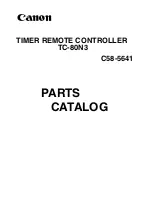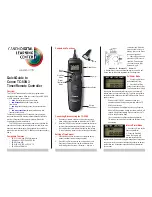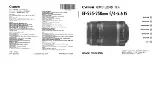
Manual, F/T Sensor, Ethernet Axia
Document #9620-05-C-Ethernet Axia-02
Pinnacle Park • 1031 Goodworth Drive • Apex, NC 27539 • Tel:+1 919.772.0115 • Fax:+1 919.772.8259 •
C-67
8.4.4
How to Interpret the Output from “!” Specifier
The output from “!” specifier reports an output in hexadecimals that must be converted to a 32-bit
binary number that correlates to a status code from
. Refer to the following table for an
example of bit patterns:
Table 8.4—Bit Pattern Examples
Bit Number
Simple Description
(Refer to
)
Bit Pattern
0
Temperature
0x80000001
1
Supply voltage
0x80000002
2
Broken gage
0x80000004
3
Busy bit
0x80000008
4
Reserved
N/A
5
Other
0x80000020
6
Reserved
N/A
7
Calibration Not Accessible
0x80000080
8 to 26
Reserved
N/A
27
Gage out of range
0x88000000
28
Simulated error
0x10000000
29
Calibration checksum error
0xA0000000
30
F/T out of range
0xC0000000
31
Any error
0x80000000
--
Healthy
0x00000000
If there is more than one error present, the bit pattern can be different, for example:
user:
S !
response:
80000005
Using a free online calculator, a user can convert the hexadecimal number to a binary number:
Hex
8
0
0
0
0
0
0
5
Binary
1000
0000
0000
0000
0000
0000
0000
0101
The binary number has 32-bits total. The least significant bit is on the right end of the following
table. “1” means the bit is on. “0” means the bit is off.
Binary
Number
1
0
0
0
0
000 0000 0000 0000 0000 00
0
0
0
1
0
1
Bit
Position
31
30
29
28
27
26 to 6
5
4
3
2
1
0
So in this example, bit number 0, 2 and 31 are on. According to the preceeding table, the sensor
has a “temperature”, “broken gage error”, and “any error” status codes. For more information,
refer to
















































